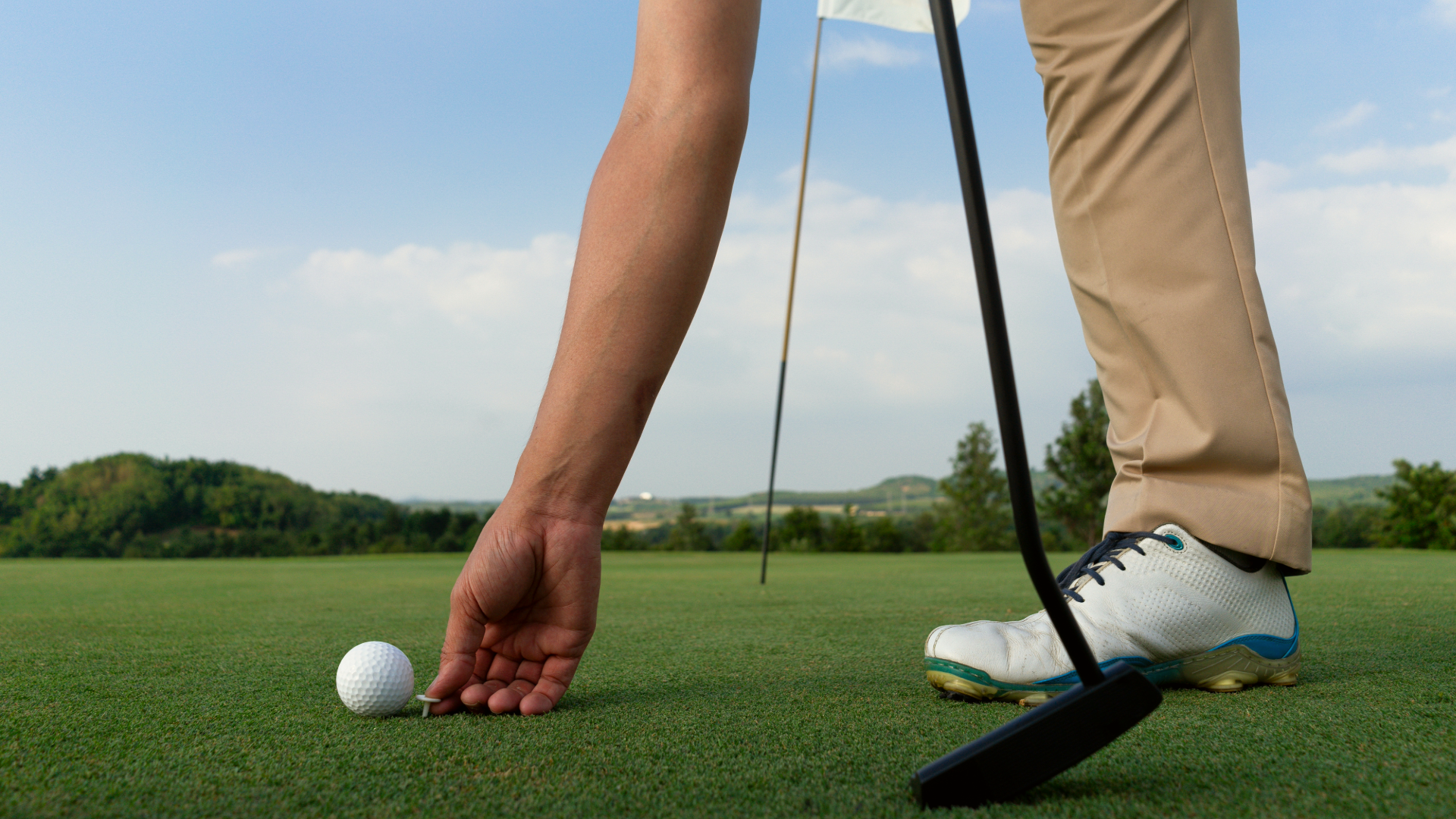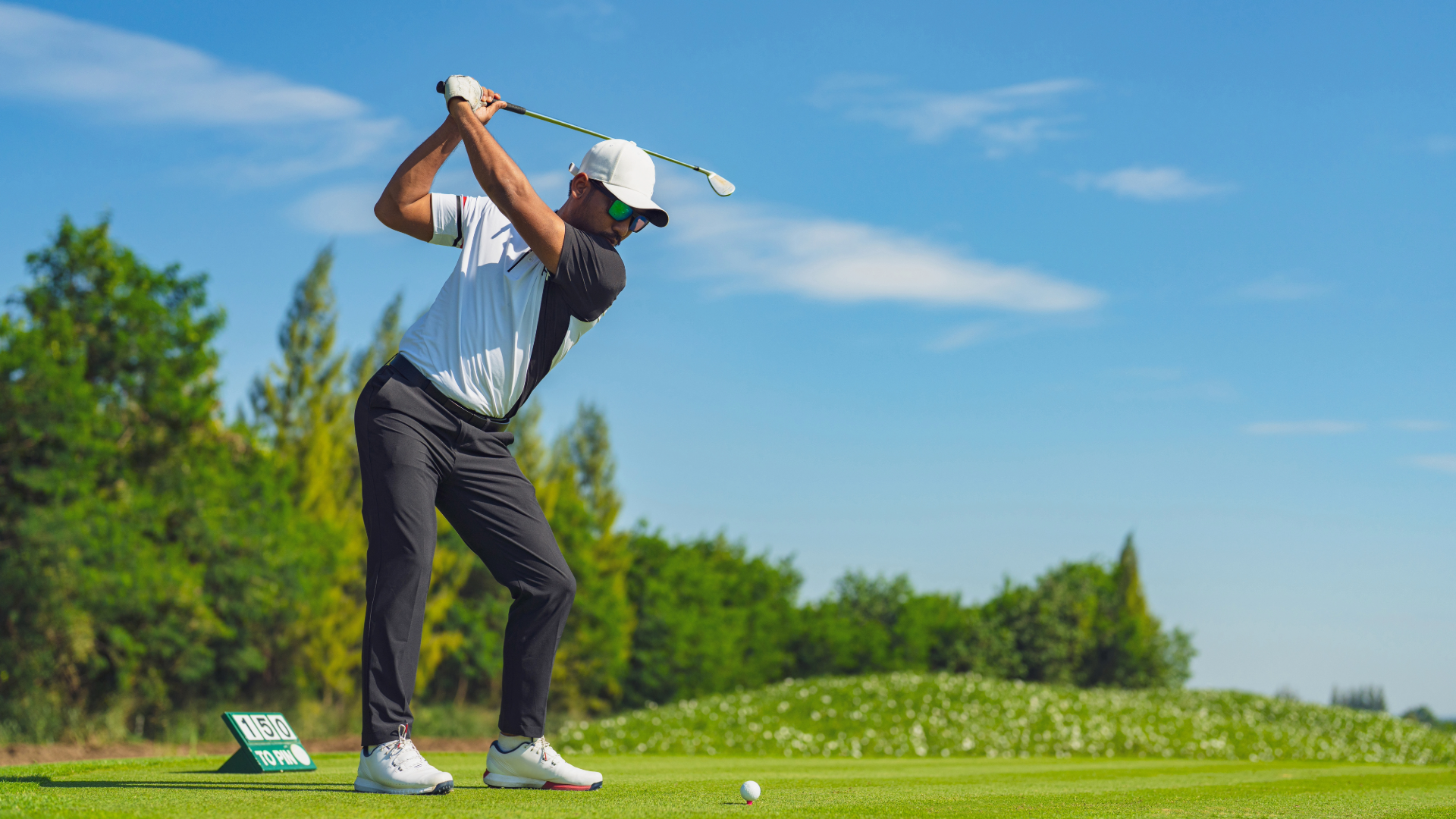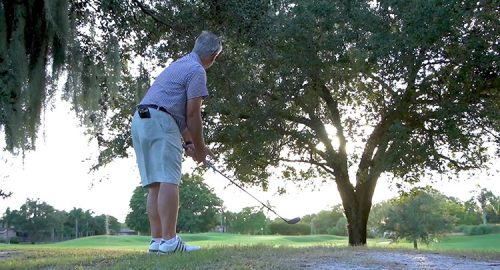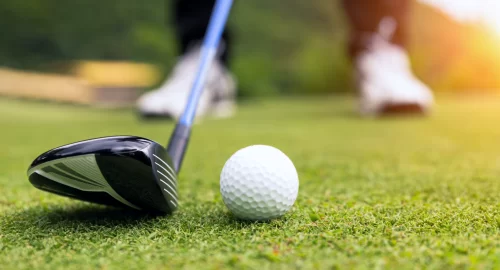
Golf is a complex game. However, amateur players tend to overlook the most basic details. One of those is the ball position. Wouldn’t you pay more attention if you knew that getting your ball position just right each time would give you a chance for a successful shot? It all starts with learning the correct golf ball position for each club you’ll be using in your game.
Our ultimate guide will show you the proper golf ball position by club, and ensure you’re set up for success before your first golf swing.
Ball Position vs. Foot Position in Golf: What Are The Differences?
Many golfers need clarification on ball position and foot position. Ball position is the location of the ball between your feet. Foot position can include the width of the stance and the angle at which your feet turn.
To hit great golf shots, you will need to consider both ball position and foot position.
Changing your ball position won’t impact your foot position. However, if you adjust your foot position, it may modify the location of the ball.
Golf Ball Position By Club
There are two critical things you should know about golf ball position.
- The ball position will change depending on the club that you have in your hand.
- All ball position adjustments are subtle; major changes from one club to the next can create too much inconsistency in your game.
The driver is the club that will be furthest forward, and the wedges more toward the center/back of the stance. Correct ball position will impact your accuracy, distance, and trajectory, so pay close attention and get these positions down.
| Golf Club | Ball Position |
|---|---|
| Driver | Just inside the front heel |
| Fairway Woods | A ball’s width inside the front heel |
| Hybrids | A ball’s width inside the front heel |
| Long Irons (2, 3, 4) | Center to slightly forward |
| Mid Irons (5, 6, 7) | Center |
| Short Irons (8, 9) | Center |
| Wedges | Center to slightly back |
| Putter | Slightly forward of center |
Ball Position By Club Complete Breakdown
If your ball position isn’t accurately set up for the swing, you’re at risk to lose distance, accuracy, and more. Let’s break down each club in your bag and discuss the proper ball position and why it makes all the difference.
Driver
- Ball Position: Just inside the front heel
The driver is the furthest up you will place a golf ball in your stance. Placing the driver too far back can cause a low shot that hooks. The opposite occurs if you place the ball too far forward.
Some players exaggerate the position of the ball with their driver, and this is where you see a lot of the pop-up type shots. If you want optimal distance in your drive, it needs to stay in the air for a while, and you must catch it as part of your upswing.
The inside front heel position is perfect for this.
Fairway Woods
- Ball Position: A ball’s width inside front heel
The biggest mistake amateur players make with the fairway woods is to place the golf ball in the same position as the driver when using the fairway wood. If you don’t move the ball back slightly, chances are you will have difficulty with consistency in your shots. The most common issues are topping or hitting the ball fat.
Hybrids
- Ball Position: A ball’s width inside the front heel
Hybrids are tricky because they are meant to be played like an iron. However, if you play them as far back as an iron, you may hit the shot fat. Instead, keep the position close to that of a fairway wood, even if it’s just slightly back from the fairway wood position.
Hybrids are built for distance and accuracy, and this ball position will guarantee that.

Long Irons (2, 3, 4)
- Ball Position: Center to slightly forward
Many amateur players have moved from long irons to hybrids. Long irons are designed for extra distance; if you play them too far back in your stance, you’ll lose this extra distance. Too far forward, and the ball will likely go too high and lose power.
Long irons take precision to hit well. Make sure that the ball position is accurate and consistent if you want to give yourself a chance.
Mid Irons (5, 6, 7)
- Ball Position: Center
The ball position for the mid-irons is the easiest to figure out. Play this shot right from the middle of your stance. With center ball position, you’ll find you have more precision and control. In addition, it’s easier to maintain balance and consistency.
Short Irons (8, 9)
- Ball Position: Center
There is a lot of talk among golfers about putting the golf ball further back in the stance when hitting short irons. This isn’t necessary. You still want to ensure you get proper ball flight and distance from your 8 and 9 irons.
Instead, put the ball in the center; your stance can be slightly narrower, but you still want to get the most out of these clubs. The biggest issue you will find with incorrect ball position in the short irons is control of the trajectory.
Your shots will fly too high and come up short or fly too low with not enough spin to stop where you want them.
Wedges
- Ball Position: Center to one ball back
Depending on the type of wedge shot you are hitting, the ball can be placed anywhere from center to slightly back of center. Getting the ball position right for your wedge shots will help to increase precision, accuracy, and spin.
Remember that your feet should also be closer together when hitting wedge shots, so that can change your visual of where the ball is located.
If you are hitting a high lofted wedge shot with an open stance, the ball may feel further back in your stance.
Putter
- Ball Position: Slightly forward of center
Putting is all about the details. If your ball position is even just slightly off, your chance of getting the ball in the hole is significantly reduced. Improper ball position can affect the roll and the direction of the putt.
The best place to put a ball with your putter is just forward of center.
With this position, you can hit the putt as part of your upswing and maintain a smoother and straighter path.
How to Master Ball Position
Head out to the range and bring some alignment sticks with you. Check the ball position of your shots and see if you are in the right place. Chances are you have an issue somewhere that can be easily adjusted. Ball position is a great problem to have in your golf game because it’s always a quick fix. Once you have these ball positions consistent and standard, you can start working on other things in your game, like weight transfer, swing plane, and distance gains.

